Iain Oughtred’s double-ended beach boats are descendants of Shetland Island yoals, workboats used extensively for fishing. While the Shetland Islands have long been politically linked to Scotland, older cultural ties to the Norse led to the development of boats with a reputation for seaworthiness, thanks to their Viking-derived shape and lapstrake construction. While some yoals were equipped with dipping lug sails, the majority were simply rowed. (Marc Chivers, a research student at the Center for Nordic Studies in the Orkney Islands, explores the history of these boats in a blog, The Shetland Boat: History, Folklore and Construction.)
The 18′2″ Arctic Tern is one of a series of Oughtred’s family of double-ended designs for oar and sail. These range from the capacious 19′6″ Caledonia yawl to the compact 15′1″ Whilly Tern. His designs differ from the traditional yoals in that they are intended to sail as much as row and designed for glued-lap plywood construction. The use of modern materials gives the boats several advantages: They are lighter than their traditional counterparts, allowing for easier rowing and transport; without ribs or other structural members, the cockpits feel more open; and the epoxy-and-plywood construction eliminates the problem of leaking caused by the shrinking of wood as it dries, an issue in traditionally built boats.
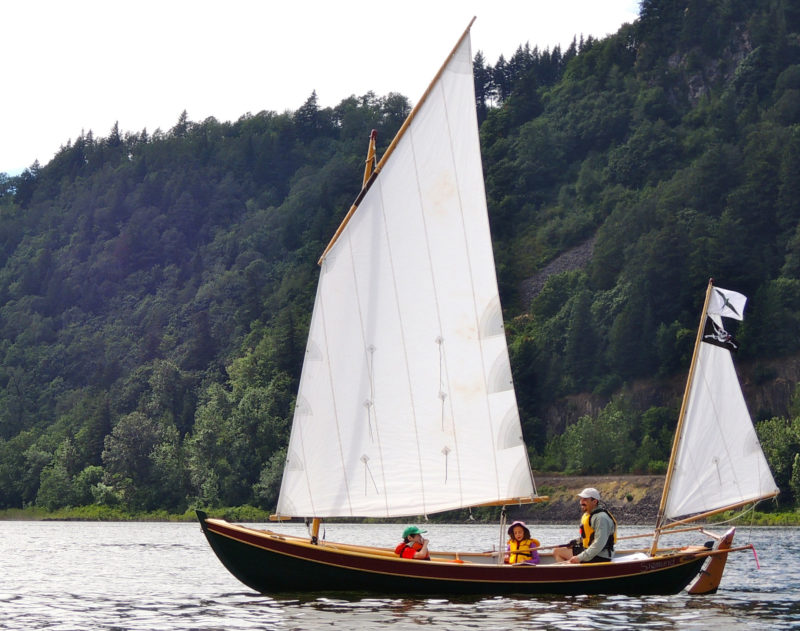 all photos by or from the collection of the author
all photos by or from the collection of the authorThe boomkin on this Arctic Tern is not according to Oughtred’s plans, but it is a common feature on his other double-enders with mizzens.
The Arctic Tern is a construction project for a builder with intermediate skills or better. The six strakes make for planks that are narrow enough to go on the molds without too much fuss at the ends. While the plans fall on the well-detailed end of the spectrum and include almost all the information a person would need to construct the boat, Oughtred’s book, Clinker Plywood Boatbuilding Manual, is a useful accompaniment to his plans.
The Arctic Tern is designed to be a camp-cruising vessel capable of being rowed or sailed long distances. It easily has enough space in the open cockpit to accommodate two people, and enclosed flotation compartments in the ends hold gear for a weeklong adventure. For a day sail, the boat will comfortably carry two adults and two children and is easily singlehanded, even under rough conditions.
I can rig and launch the boat by myself in less than 20 minutes. The unstayed masts on the yawl version of the Arctic Tern speed rigging; they’re simply dropped into the maststeps. The top forward corner of the centerboard protrudes at the top of the trunk; the unweighted board is easily lowered and raised. A shock cord attached to the board has a snap-shackle that gets clipped to a stainless-steel pad-eye at the aft end of the centerboard case to keep the board down and allow the board to retract if it hits an obstruction. With the board up, the Arctic Tern floats in about a foot of water. Nosed onto a beach on a falling tide, the boat leans slightly but comes to rest relatively flat, and you can attend to any chores that need to be done. If you wanted to stay aboard while aground, tucking a small fender under each bilge would allow you to sit or sleep in level comfort.
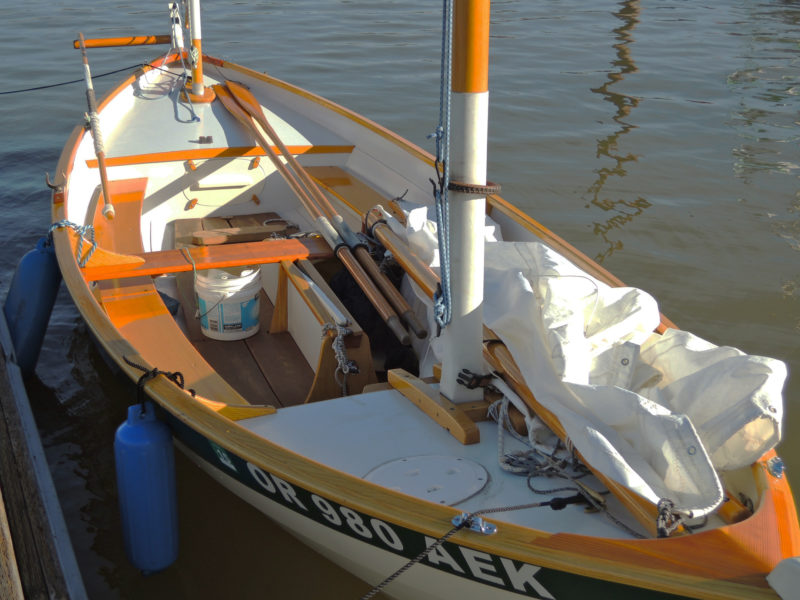
The circular access port was added to ease access to the forward compartment.
The Tern has a surprising number of seating locations for a boat of its size: the aft flotation compartment, the side benches, the amidships thwart, and even the floorboards. This variety makes a long journey much more comfortable and makes it easy to fine-tune trim. Each location provides some back support, as well as legroom and easy access to the sheets and the main’s downhaul. With my homemade cockpit tent, I find it reasonably comfortable to sleep on the floorboards by sliding my legs under the thwart and resting my head aft. This extends the range of places I’ve been able to cruise solo, especially on a multi-day trip where camping on shore is prohibited or not possible, but the boat is too small for additional crew to be comfortable overnight.
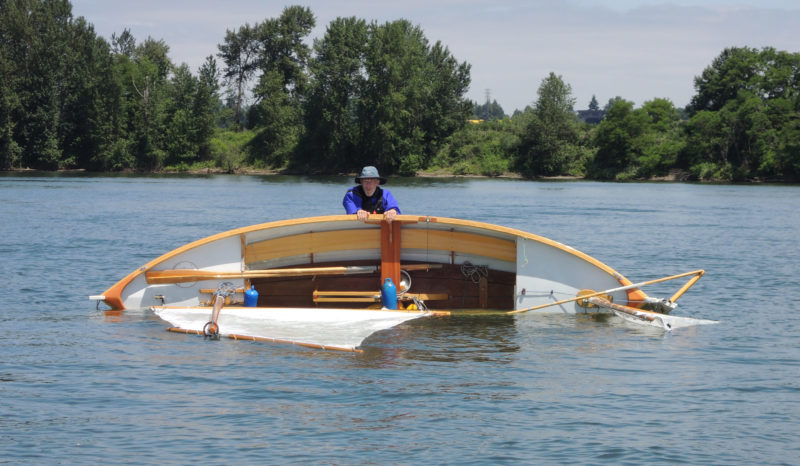
The buoyancy compartments under the end decks keep the Arctic Tern floating high, and the masts keep it from turning turtle. Additional flotation secured under the side benches would add stability to the swamped boat when it is righted.
Flotation compartments in the bow and stern are a great safety feature and double as dry storage. In my capsize drills the masts prevent the boat from turning turtle. When the boat is righted, the built-in flotation keeps the open slot at the top of the trunk above water level so the boat can be bailed. I can right the Tern by myself by standing on the centerboard and scrambling into the boat as it rolls back over. Sloshing water in the boat can destabilize it, so you have to crawl aboard and be ready to steady the boat. There’s a lot of bailing that follows rerighting, so a good high-capacity pump or bucket at the ready is required for a quick and effective recovery. (For a video of a capsize trial, click here.)
The flotation compartments have ample storage space for gear, but the oval hatches in the bulkheads, measuring approximately 15″ x 25″, are awkward to use and too small for larger items like sleeping bags or larger dry bags. I’ve installed a round deck plate on top of the forward compartment and plan to install larger rectangular watertight hatches on top of both compartments for even easier access.
The cockpit offers a lot of open, flexible space, and when we’re cruising we travel with a lot of gear kept in numerous small dry bags that we lash along the port side, below the benches and thwart, leaving room on the starboard side of the boat to access sails or set an anchor.
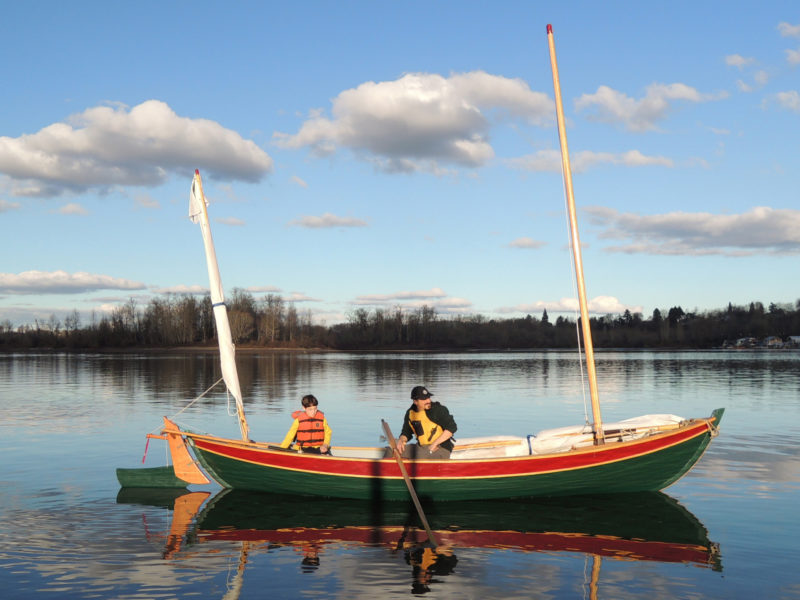
The Arctic Tern is drawn up with one rowing station; with some modifications to the interior layout the boat could be arranged for tandem rowing.
With a beam of 5′4 1/2″, the Tern is comfortable to row at approximately 2 knots, but is also about the largest boat that a man of my size—6′1″, 175 lbs—can row for long distances. The Tern tracks well, providing the gear in the boat is trimmed well and the rudder and centerboard are retracted. I have rowed the Tern with a variety of flat-bladed oars, in lengths from 9′ to 11′, but 10′ seems to be the ideal balance between the ability to make long strokes in flat water and the quick strokes needed to row in rough conditions. Finding a location to store the oars when the boat is under sail can be a challenge on many sail-and-oar boats, including this one. The oars are too long to stow on the cockpit sole or comfortably in the locks and secured to the gunwales. Stowing them leaning partially on the forward flotation compartment while tucked under the thwart on the starboard side keeps them reasonably secure, but also accessible in a pinch. A motor well is indicated in the plans, but I don’t have a need for an outboard and prefer not sacrificing valuable storage space and flotation to accommodate one.
Although the Tern has rowing boats as its forebears, it sails very well. While a stayed gunter sloop rig is one option Oughtred offers in his plans, many builders choose a balanced-lug main with a leg-o’-mutton mizzen. The mizzenmast calls for a split tiller or a push-pull Norwegian-style tiller. The latter can feel unfamiliar if you’re used to the more common sweep tiller, but after a few hours of sailing you’ll get the hang of it.
The 120-sq-ft sloop rig with a high-peaked gaff main and a jib may be the fastest and highest-pointing of the rigs shown in the plans, but I opted for the lug yawl rig with a 94-sq-ft main and a 17-sq-ft mizzen. The yawl rig keeps the center of effort low and reduces the heeling while under sail. The mizzen also serves an important safety role. With the mainsheet released and the mizzen sheeted in tightly, I can easily heave-to. The boat will weathercock and bring the bow pointing into the wind and waves. If the tiller is lashed with the rudder angled out to the side, it acts as a brake, slowing the downwind drift of the boat. I have sat comfortably hove-to for up to a half hour in 20-knot winds; this gives me ample time to consider options, have a snack, or drink, and make good, unhurried decisions. While hove-to it’s also easy to reef or lower the mainsail from the safety of the middle of the cockpit.
The mainsail is shaped by a highly tensioned downhaul near the base of the mast, and with the luff pulled taut, the standing-lugsail points reasonably well, but not as high as the gunter rig might. And although the shape of the sail is better when on the downwind side of the mast than creased over the mast on the upwind side, the boat seems to perform about the same on either tack. The Tern is steady and responsive under most wind conditions, and in a big gust, as long as the main isn’t sheeted too tightly, the boat tends to round up rather than get knocked down. With three rows of reefpoints, the mainsail can be sized to sail comfortably in a wide variety of conditions from light winds to about 20 knots. By the time the third reef is needed, the ability to point and steer well goes down and it’s time for me to head for a safe haven.
I have the mizzen sheet reeved through a stand-up spring block on the rudderhead, as called for in the plans, but the builder of my boat’s sistership deviated, adding a boomkin, a feature incorporated in several other Oughtred designs, for sheeting his mizzen. In light winds both arrangements perform equally well, but when the wind gets over 15 knots, control of both the rudder and mizzen is easier with the boomkin. The Tern rides dry whether under sail or oar; even under bumpy conditions, not much more than a few splashes tend to come aboard.
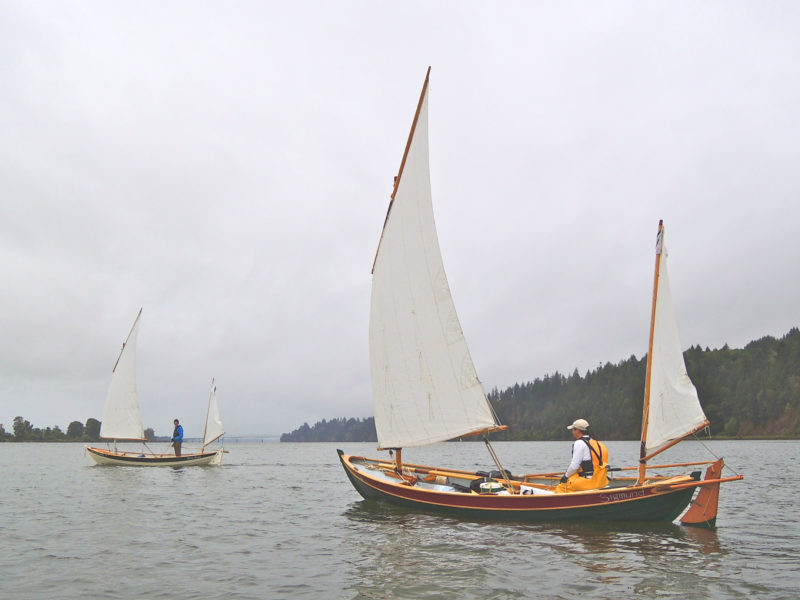
The author’s Arctic Tern, ROW BIRD (left), and SIGMUND, both built by Andy McConkey, sail out of Portland, Oregon, and cruise the inland waters of the Pacific Northwest.
The Arctic Tern fulfills its role as a daysailer and camp-cruiser with flair. The boat quickly goes from driveway to launch, making a day sail an enjoyable outing with little time spent at the ramp. It also makes the transformation from a capable sailboat into a respectable rowing boat or the reverse, with practice, in about a minute and a half. It has impressive stability and maneuverability in open water, and sails especially well with a heavy load aboard. The ability to pull the Arctic Tern ashore for the night or sleep aboard at anchor enables it to go places other boats can’t follow. If you are in the market for the nautical equivalent of hiking and backpacking, this boat is certainly capable of taking you on adventures near and far.![]()
Bruce Bateau sails and rows traditional boats with a modern twist in Portland, Oregon. His stories and adventures can be found at his web site, Terrapin Tales.
Particulars
[table]
LOA/18′ 2″
Beam/5′ 2″
Weight/240 lbs
[attr style=”font-weight:bold;”]Sail area
Single lug/102 sq ft
Lug yawl/111 sq ft
Gaff sloop/120 sq ft
[/table]
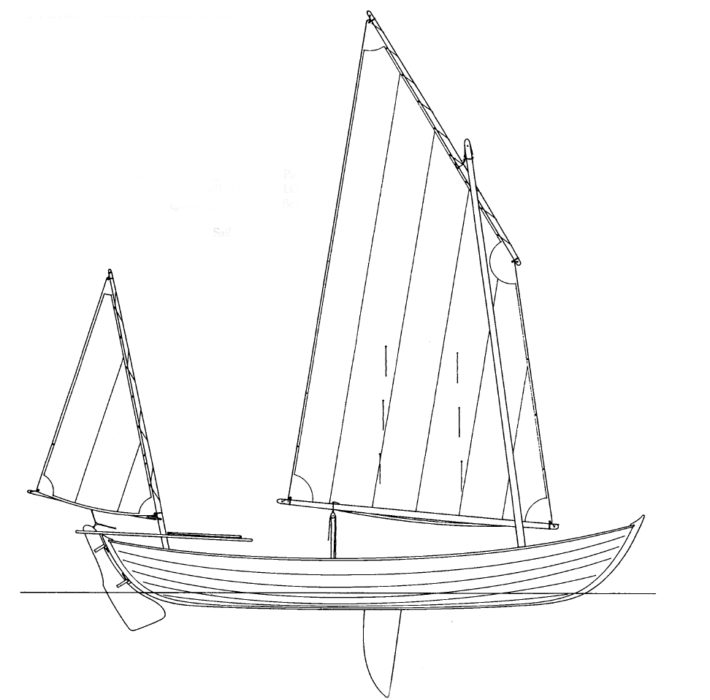
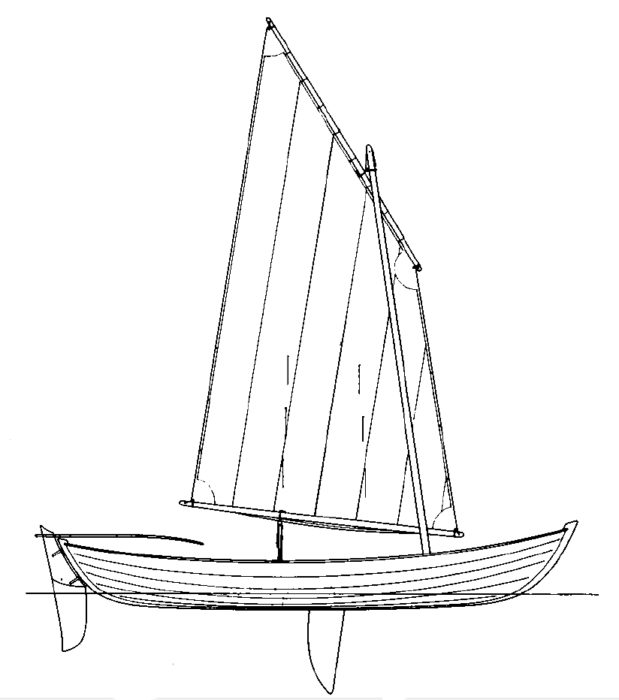
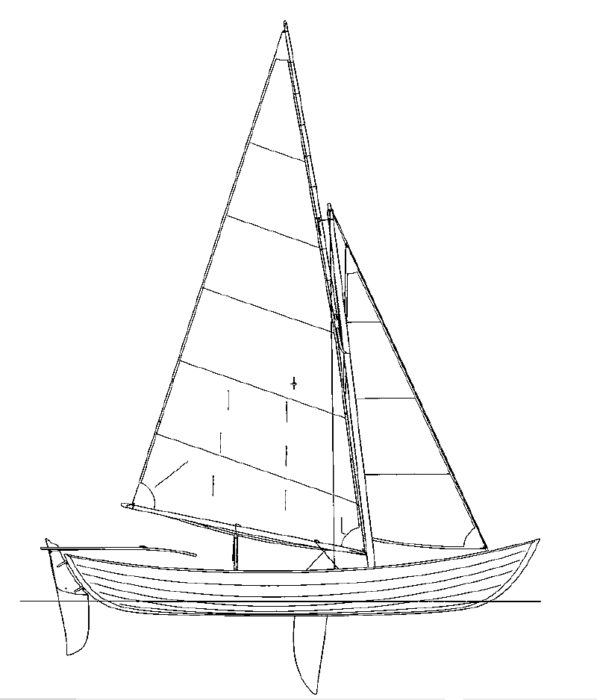
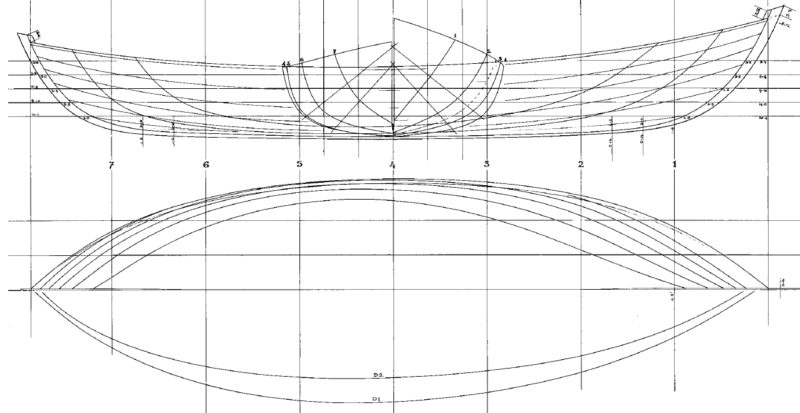
 Plans ($306AUS) and kits ($3,970AUS) for the Arctic Tern are available from Oughtred Boats in Australia. Hewes & Company in Blue Hill, Maine, produces many CNC-cut kits, including one for the Arctic Tern. Jordan Boats in the UK also makes kits for Oughtred-designed boats.
Plans ($306AUS) and kits ($3,970AUS) for the Arctic Tern are available from Oughtred Boats in Australia. Hewes & Company in Blue Hill, Maine, produces many CNC-cut kits, including one for the Arctic Tern. Jordan Boats in the UK also makes kits for Oughtred-designed boats.
Is there a boat you’d like to know more about? Have you built one that you think other Small Boats Monthly readers would enjoy? Please email us!

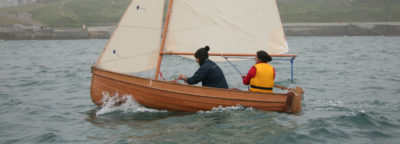
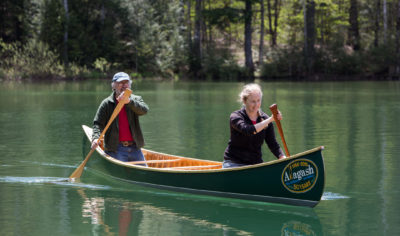
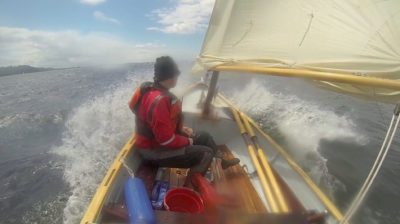
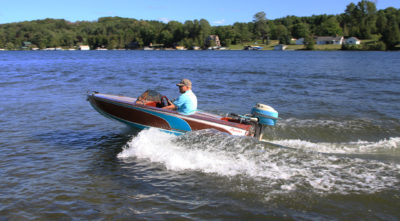
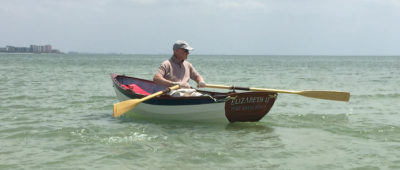
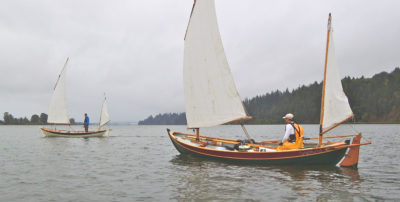
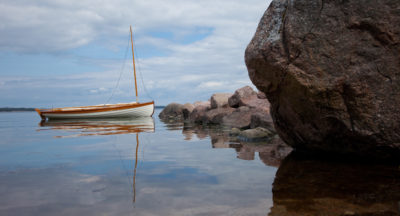
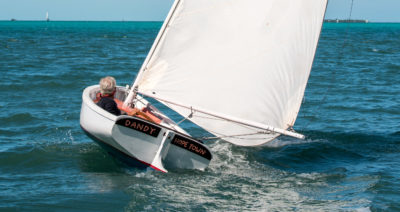
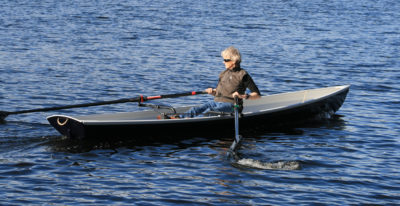
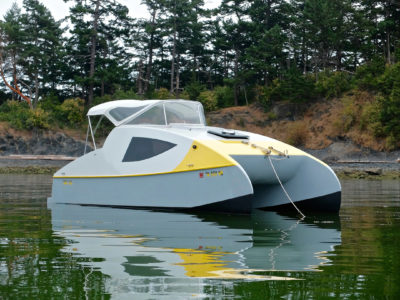
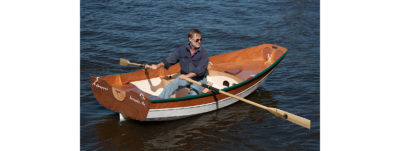
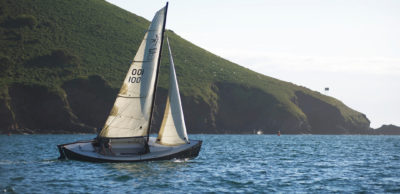
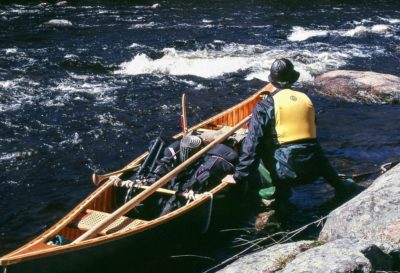
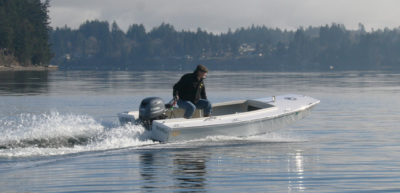
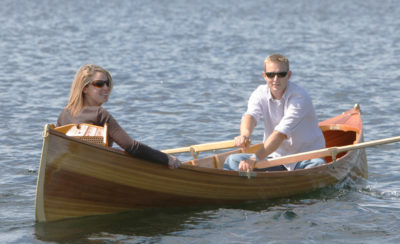
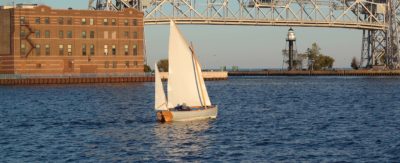
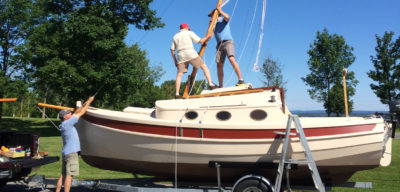
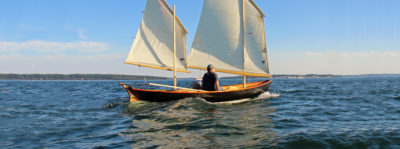
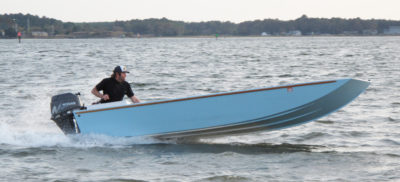
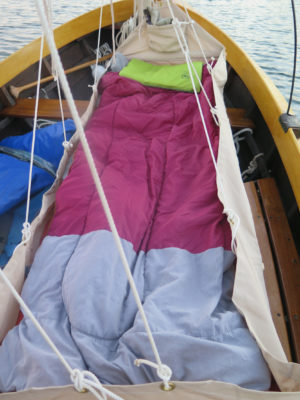
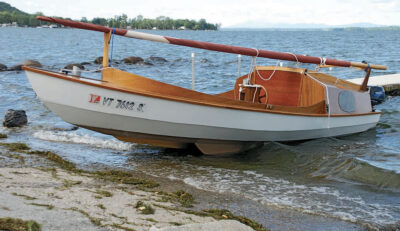
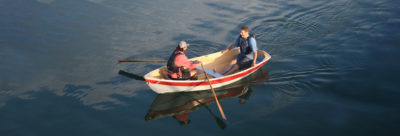
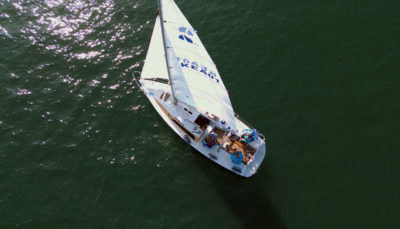
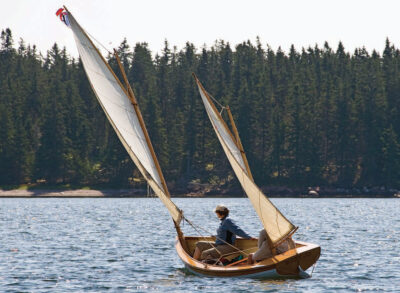
I recently completed a Sooty Tern which is a “stretched” Arctic Tern, and I would agree with everything you said here! These are excellent boats!
Where I can read about and look at Oughtred’s Sooty Tern?
You’ll find some pictures and a description of the Sooty Tern, UNA, in our Reader Built Boat feature in the December 2015 issue, and see the tiller arrangement for the same boat in “The Norwegian Tiller” in the August 2015 issue. You can catch a few glimpses of UNA under sail in the video included with “American Venice” in the July 2015 issue.
Christopher Cunningham, Editor, Small Boats Monthly